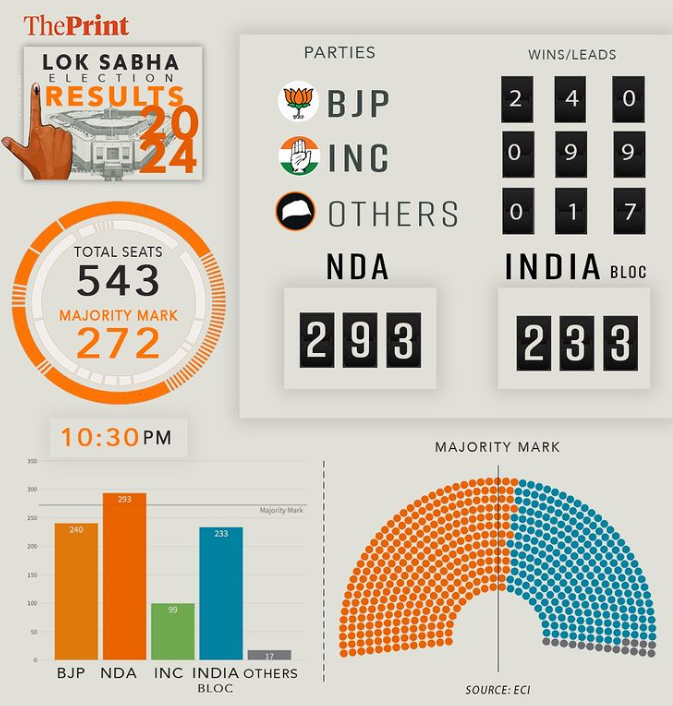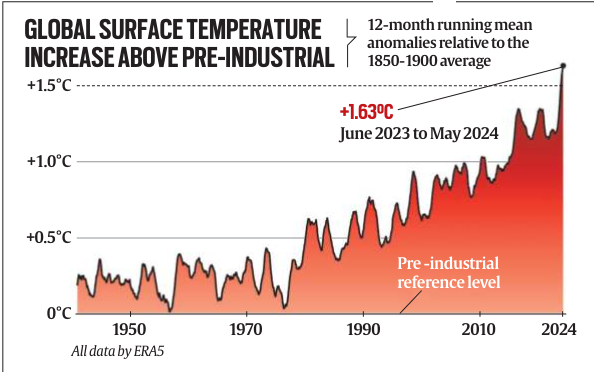10 June 2024 : Daily Current Affairs
1. States told to act on social media groups, sites trading organs
| Topic: GS2 – Governance, GS2 – Social Justice – Health |
| Context |
|
Analysis of the news:
- The Union government has issued an alert to all States/Union Territories about illegal organ trading on websites and social media.
- Ministry of Health and Family Welfare flagged certain platforms offering money for kidneys and other organs.
- Directorate General of Health Services highlighted violations of Transplantation of Human Organ and Tissue Act (THOTA), 1994.
- Centre warned of fines up to ₹1 crore and imprisonment for violators under Section 18 of THOTA.
- States were urged to appoint appropriate authorities to combat organ trafficking.
- Awareness initiatives, including CBSE curriculum inclusion, aim to educate the public.
- National Organ and Tissue Transplant Organization established to regulate organ procurement and distribution.
| Organ trafficking in India: |
|
Negative Repercussions of Organ Trafficking in India: Health Risks:
Challenges in Combating Organ Trafficking:
Way Forward:
|
| Practice Question: Discuss the measures taken by the Union government to curb illegal organ trading in India. (150 Words /10 marks) |
(Source – The Hindu, International Edition – Page No. – 3)
2. Is it time for proportional representation?
| Topic: GS2 – Indian Polity |
| Context |
|
Analysis of the news:
Election Results and Federalism

- 2024 Lok Sabha Election Results: The ruling National Democratic Alliance (NDA) secured 293 seats with a 43.3% vote share, while the Opposition bloc INDIA (including Trinamool Congress) obtained 234 seats with a 41.6% vote share. Other regional parties and independents polled around 15% but only secured 16 seats in total.
| First Past the Post System (FPTP) |
|
| Proportional Representation (PR) System |
|
Criticisms of the PR System
- Potential Instability: May lead to no party/coalition obtaining a majority, resulting in governmental instability.
- Proliferation of Political Parties: Could encourage the formation of parties based on regional, caste, religious, and linguistic lines, promoting divisive voting patterns.
- Counter-Argument: The present FPTP system has not prevented the formation of such parties either. Setting a minimum threshold for votes polled could mitigate this issue.
Mixed Member Proportional Representation (MMPR)
- Definition: Combines elements of FPTP and PR systems. One candidate is elected through FPTP from each constituency, while additional seats are filled based on parties’ percentage of votes.
- International Practices:
- Germany: The Bundestag has 598 seats, with 299 filled through FPTP and the other 299 through PR. Parties must secure at least 5% of votes to be eligible for PR seats.
- New Zealand: Out of 120 seats, 72 are filled through FPTP, and 48 through PR, with a 5% vote threshold for PR seats.
- Benefits for India: Likely to provide stability while ensuring proportional representation.
Way Forward
- Law Commission’s Recommendation: The 170th report (1999) suggested introducing the MMPR system on an experimental basis, recommending that 25% of seats be filled through PR by increasing the strength of the Lok Sabha.
- Delimitation Exercise: The upcoming delimitation exercise, based on the first Census after 2026, provides an opportunity to implement MMPR for incremental seats or at least 25% of total seats from each State/UT.
- Regional Balance: Implementing MMPR can address the concerns of southern, northeastern, and smaller northern states by preventing the dominance of larger states through the FPTP system alone.
- Federal Principles: Determining the number of seats solely based on population may undermine federal principles. A balanced approach considering both population and proportional representation is needed.
By adopting such reforms, India can achieve a balance between stability and fair representation, ensuring that all political parties and regions are adequately represented in legislative bodies. This would enhance the democratic process and federal structure of the country.
| Practice Question: Discuss the merits and demerits of adopting a Proportional Representation (PR) system for Lok Sabha elections in India. Should India consider moving away from the First Past the Post (FPTP) system? (250 Words /15 marks) |
(Source – The Hindu, International Edition – Page No. – 10)
3. Global Heat Records Shattered: May 2024 Becomes the Warmest on Record Amidst Urgent Calls for Climate Action
| Topic: GS1 – Geography – Climate Change |
| Context: |
| May 2024 was the warmest May on record, continuing a trend of unprecedented global warming. The Copernicus Climate Change Service (C3S) reported that each of the past twelve months has set new temperature records. The average global temperature for May was 1.5 degrees Celsius above the pre-industrial average from 1850-1900. Over the past year, the average temperature was 1.63 degrees Celsius higher than this baseline, indicating a significant and ongoing rise in global temperatures. |
Analysis of News:

Implications of Rising Temperatures:
- The World Meteorological Organization (WMO) has raised concerns about future warming, stating that there is now an 80% chance that at least one year between 2024 and 2028 will see temperatures exceed 1.5 degrees Celsius above pre-industrial levels.
- This is a notable increase from the 66% chance predicted a year ago. However, surpassing this threshold for a single year does not imply a permanent breach of the 1.5 degrees Celsius target set by the Paris Agreement, which is based on long-term averages.
Understanding the 1.5 Degrees Celsius Threshold:
- The 1.5 degrees Celsius threshold is a critical benchmark established by the 2015 Paris Agreement, signed by 195 countries.
- The agreement aims to keep global warming “well below” 2 degrees Celsius above pre-industrial levels, with an aspirational target of limiting warming to 1.5 degrees Celsius.
- This limit was chosen based on scientific evidence indicating that exceeding it could lead to severe and irreversible impacts on vulnerable regions and ecosystems.
Consequences of Exceeding the Threshold:
- Breaching the 1.5 degrees Celsius threshold is not an instantaneous catastrophe but signals a higher risk of severe climate impacts. These include sea level rise, extreme weather events, and loss of biodiversity.
- As global temperatures rise, the frequency and intensity of heatwaves, such as the one in North and Central India in late May, are likely to increase.
- This particular heatwave saw temperatures near 50 degrees Celsius and resulted in hundreds of deaths, underscoring the tangible effects of global warming.
Global Climate Tipping Points:
- The world is already experiencing some of the consequences of climate change, including coral bleaching events and the risk of crossing critical climate tipping points.
- These tipping points represent thresholds beyond which natural systems undergo irreversible changes, such as the melting of the Greenland ice sheet and the death of coral reefs.
- Crossing these thresholds could lead to further warming and extensive damage to the planet’s ecosystems.
Strategies to Stay Within the Threshold:
- To avoid breaching the 1.5 degrees Celsius limit, immediate and radical reductions in greenhouse gas (GHG) emissions are necessary. This requires a drastic reduction in the use of fossil fuels like coal, oil, and gas.
- Despite the urgency, global GHG levels reached historic highs in 2023, with carbon dioxide levels rising significantly.
- The WMO warns that without significant action, the world is likely to temporarily breach the 1.5 degrees Celsius limit within the next five years, emphasizing the need for concerted global efforts to curb emissions and transition to sustainable energy sources.
Call to Action:
- UN Secretary-General António Guterres has stressed the urgent need for action, describing the current situation as playing “Russian roulette” with the planet.
- He calls for an “exit ramp off the highway to climate hell,” highlighting that the world has the ability to steer away from catastrophic climate change if decisive actions are taken to reduce emissions and mitigate climate impacts.
| PYQ: ‘Climate Change’ is a global problem. How India will be affected by climate change? How Himalayan and coastal states of India will be affected by climate change? (250 words/15m) (UPSC CSE (M) GS-3 2017) |
| Practice Question: Discuss the implications of the recent record-breaking global temperatures, including the warmest May on record in 2024, on climate policy and international agreements. Evaluate the effectiveness of current global efforts to limit warming to 1.5 degrees Celsius above pre-industrial levels, and suggest measures that can be taken to enhance climate action and mitigate the impacts of rising temperatures. (250 words/15 m) |
(Source: Indian Express; Section: Explained; Page: 14)
4. Political Contention Surrounds Review of Agnipath Scheme
| Topic: GS2 – Governance – Government policies– Issues arising out of their design & implementation. |
| Context: |
|
Analysis of News:
Understanding the Agnipath Scheme:
- The Agnipath scheme is designed to recruit personnel below officer ranks, known as ‘Agniveers,’ to the Indian Armed Forces for a four-year tenure.
- At the end of this period, up to 25% of the Agniveers may be offered permanent commissions based on merit and organizational needs.
- The scheme targets aspirants aged between 17.5 and 23 years, and recruits all soldiers, airmen, and sailors except the technical cadre of the medical branch.
- Since its inception, multiple batches of Agniveers have undergone training and commenced their postings across the Army, Navy, and Air Force.
Differentiating Agniveers from Regular Soldiers:
- Agniveers receive a basic monthly salary of Rs 30,000 to Rs 40,000, along with risk and hardship allowances. They contribute 30% of their salary to the Seva Nidhi fund, which is matched by the government.
- Upon completing their service, Agniveers receive a tax-exempt lump sum of approximately Rs 11.71 lakhs.
- In the event of death or disability, Agniveers’ families receive significant compensation, including a lump sum of Rs 1 crore or up to Rs 44 lakhs, respectively.
- Unlike regular soldiers, Agniveers do not receive pensions unless they are among the 25% absorbed into permanent positions.
Objectives Behind Agnipath:
- The Agnipath scheme aims to reduce the wage and pension bill of the Armed Forces while maintaining a youthful profile.
- By lowering the average age of the forces from 32 to 26 years, the government envisions a more dynamic and modern military.
- The scheme also aims to equip Agniveers with skills and discipline that benefit civil society post-service.
- The government has committed to supporting the rehabilitation and further education of those who leave the services after their tenure.
Criticism of the Scheme:
- The Agnipath scheme has been criticized for creating a “lesser” cadre of soldiers with fewer benefits and a shorter tenure compared to regular soldiers.
- Critics argue that this disparity in benefits undermines the contributions of Agniveers. Political leaders, including Congress leader Rahul Gandhi, have called attention to the perceived injustice in benefits accorded to Agniveers’ families compared to regular soldiers.
- The shorter tenure and reduced benefits have sparked discontent among those who view military service as a pathway to economic stability.
Government’s Response and Potential Adjustments:
- The government has signaled a willingness to modify the Agnipath scheme based on internal assessments and recommendations from the Armed Forces.
- While maintaining the scheme’s objective of a youthful profile for the military, potential changes may be considered to address the concerns raised by critics.
- The Department of Military Affairs has received observations from all three military services, which will inform any future adjustments to the scheme.
| PYQ: Department of Border Management is a Department of which one of the following Union Ministries? (2008) (a) Ministry of Defence (b) Ministry of Home Affairs (c) Ministry of Shipping, Road Transport and Highways (d) Ministry of Environment and Forests Ans: (b) |
| Practice Question: Critically examine the Agnipath scheme introduced by the government for military recruitment. Discuss the primary objectives behind its implementation, the criticisms it has faced, and the potential impacts on the Armed Forces and the recruits. (250 words/15 m) |
(Source: Indian Express; Section: Explained; Page: 14)
Prelims Facts
1. 72-member NDA Ministry takes oath of office
| Context |
|
Constitutional provisions regarding Council of Ministers:
- Article 74:
- The Council of Ministers, headed by the Prime Minister, aids and advises the President in the exercise of his functions.
- The President is bound by the advice of the Council of Ministers, except in certain cases where he may act at his discretion.
- Article 75:
- The Prime Minister is appointed by the President, and other ministers are appointed on the advice of the Prime Minister.
- The Council of Ministers is collectively responsible to the Lok Sabha, the lower house of Parliament.
- Ministers hold office at the pleasure of the President.
- The salaries and allowances of ministers are determined by Parliament.
- Article 77:
- All executive actions of the Government of India are formally taken in the name of the President.
- Orders and instruments made and executed in the President’s name must be authenticated as per rules framed by the President.
- Article 78:
- The Prime Minister is responsible for communicating to the President all decisions of the Council of Ministers relating to the administration of the affairs of the Union and proposals for legislation.
- The Prime Minister must furnish information relating to the administration of the Union and proposals for legislation as the President may call for.
(Source – The Hindu, International Edition – Page No. – 1)
2. Hydrogen line: a unique signal
| Context |
|
Analysis of the news:
- The hydrogen line is significant in modern astronomy, used for studying distant stars and searching for extraterrestrial intelligence.
- Hydrogen atoms consist of one proton and one electron, both having a property called spin, which can be up or down.
- When the spins of the proton and electron are anti-aligned, the atom has more energy than when they are aligned.
- The atom emits electromagnetic radiation of 21 cm wavelength when the electron flips its spin to align with the proton, shedding excess energy.
- Discovered in 1951, the hydrogen line transformed radio astronomy by allowing detection of cold, neutral hydrogen atomic gas in interstellar space.
- This led to the creation of the first map of the Milky Way galaxy and the discovery of its spiral arms.
- The 21 cm emission is also used to detect the first light from the universe’s earliest galaxies.
- Its simplicity in detection suggests it could be used to send signals across space that might be detected by alien civilizations.
(Source – The Hindu, International Edition – Page No. – 7)



